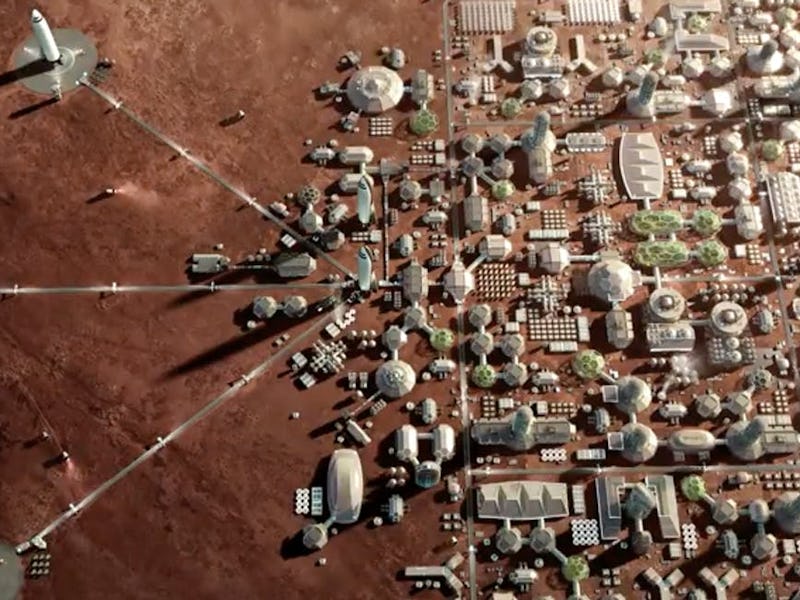In 2019, SpaceX took 4 giant leaps to make a human colony on Mars reality
If last year's innovations are anything to go by, Elon Musk's prediction of a city on Mars by 2050 may actually become a reality.

In March 2019, SpaceX took the first step towards the company’s future. Over the course of the last 12 months, Elon Musk’s company made four huge leaps toward making his prediction that SpaceX could build a city on Mars by 2050 a reality.
Inverse was there for them all — as the new decade dawns, we are looking back at these space travel firsts and setting out why they matter so much for the future of human space exploration.
This is #1 on Inverse’s 20 wildest space discoveries of 2019
Musk told followers via Twitter on March 25 that creating a new city on Mars in just over 30 years is feasible:
It’s possible to make a self-sustaining city on Mars by 2050, if we start in 5 years & take 10 orbital synchronizations
For someone well-known for their wild ambitions, it was quite the statement, but it helped concentrate minds on SpaceX’s next moves.
SpaceX’s Mars city: a year in review
When Starhopper took flight in August, it was billed as a means to make this ambitious project happen.
At the start of this year, SpaceX’s facility in Boca Chica was home to some interesting rocket parts and a powerful engine. The company entered April with a working Raptor engine that could bring a mission to Mars to fruition. Its liquid oxygen and methane fuel would enable astronauts to refuel using Martian resources and fly home again. During that month, the company completed a tethered firing with the engine placed inside the Starhopper, a short vehicle Musk compared to “R2D2’s Dad.”
And then in August 2019, SpaceX did it again. The Starhopper flew 150 meters into the air.
The Starship taking off.
After that, the vehicle was retired, making way for the Starship, which measured 164 feet tall, dwarfing the miniature 60-foot Starhopper. When paired with the Super Heavy booster, the full ship is expected to measure 387 feet. When the Starship Mk.1 was unveiled in September 2019, followers knew it could carry the first humans to Mars.
Things got serious in October, when Musk declared that the project would cost $1 trillion — a sign that it is budgeted out, and likely to keep up the pace in 2020.
SpaceX’s Mars city: what could it do?
The first manned ships to Mars would be tasked with finding resources and building out a base. The team would then focus on scientific research projects. But with each ship potentially bringing 100 people at a time during each synchronization, it may not be long before the number of people on Mars grows of its own accord.
To make this city a reality, Musk will rely not only on his company’s technology, but also on the orbits of Mars and Earth.
Elon Musk took to Twitter in February 2019 to lay out plans for a manned mission to Mars -- a journey that may be dependent on the orbits of Mars and Earth.
The synchronizations Musk refers to in his March tweet are actually Mars and the Earth’s orbital synchronization patterns. These will be crucial to this mission. The key moments will happen when the pair align every 26 months. During that point, the distance between them is reduced to around 33.9 million miles.
As 2020 dawns, Inverse is counting down our top 20 space stories from 2019. You can read them all here. Some are wild, some are mind-boggling, and others will change how you think about the universe. This has been #1. Read the original story here.